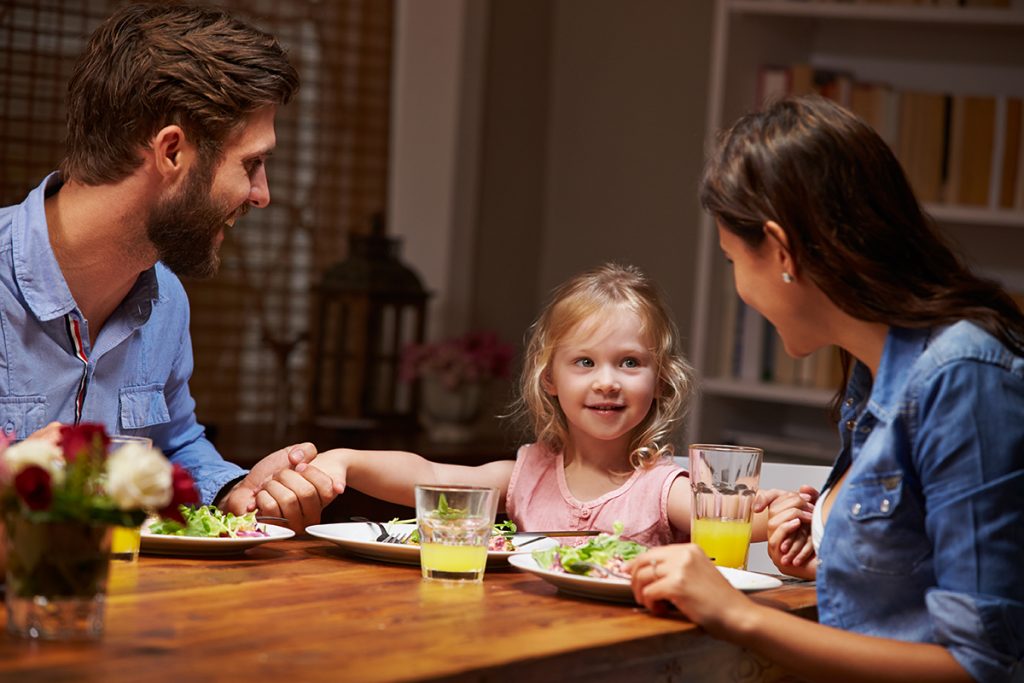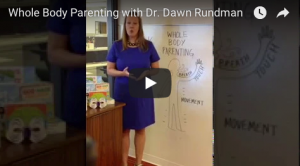Contact Us
Recently, I led a 30-minute Facebook Live event, “Whole Body Parenting,” for moms (and dads!) of young children. Many of my presentations for parents and church leaders have focused on learning about early brain development; how neurons in the brain form connections with other neurons and become pathways that are shaped by the experiences that young children have. For this Facebook Live event, I wanted to explore ways we use our whole bodies to parent. I’ll share with you some of the research findings and include some scripture references. Hopefully this content will help you gain some new insights about parenting with our whole bodies, and how we can do this in faithful ways.
I researched three areas of parenting using our bodies: breathing, touch and movement.
Breathing is usually automatic, involuntary and continuous, but breathing is also the only automatic function that we can regulate voluntarily. When we choose to focus on our breathing, especially when we are feeling stressed or anxious, our deep breathing triggers our parasympathetic nervous system (“rest and digest”) to counter the “fight-or-flight” responses that are triggered by our sympathetic nervous system.
When we feel upset, angry, overwhelmed, fed up or panicked, those states are associated with the fight-or-flight response in our bodies that speed up our breathing and our heart rates. When we step out of those moments to take control of our breathing, we can actually override those physical stress responses. (You can’t be in both physical states at once. When you start deep breathing, your parasympathetic nervous system tells your sympathetic response, “Knock it off – I’m in charge now.”)
Now, what are some of those breathing techniques? Lots have been developed, but you’ll see (and try) 4-7-8 Breathing in the Facebook Live event: inhale for 4, hold for 7, exhale for 8.
Here’s the amazing thing – you can teach these techniques to your child, too. And when you do, they have fun names! (Note: Teach while child is calm, not in the middle of a tense situation.) Watch the Facebook Live event to learn Flower-and-Candle Breathing, Feather Breathing and Bear Breathing.
We know that breathing brings about some differences in our physiology, and can help our kids calm down. Isn’t it amazing that we can also look to scripture for examples of breathing’s power? Here are just a few passages:
Genesis 2:7 God breathes life into humans.
Acts: 17:24-25 God gives breath to humans.
Job 33:4 Job credits the breath of the Almighty for giving him life.
Ezekiel 37:5 God breathes life into dry bones.
John 20:22 Jesus breathes on his disciples and tells them to receive the Holy Spirit.
Breath has power, and as you parent with your whole body and your whole self, may you know how your breathing and your child’s breathing can be a part of your parenting.
Click here to read the rest of this post at the Sparkhouse Family blog.
Dawn Rundman has a Ph.D in developmental psychology. She is currently the director of congregational resource development at Sparkhouse, a publisher of resources that spark new life in Christian communities. She lives in the Twin Cities with her husband/prom date Jonathan and their two children, who have learned by now that solving any challenge in life begins with three deep breaths.

